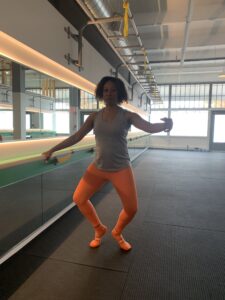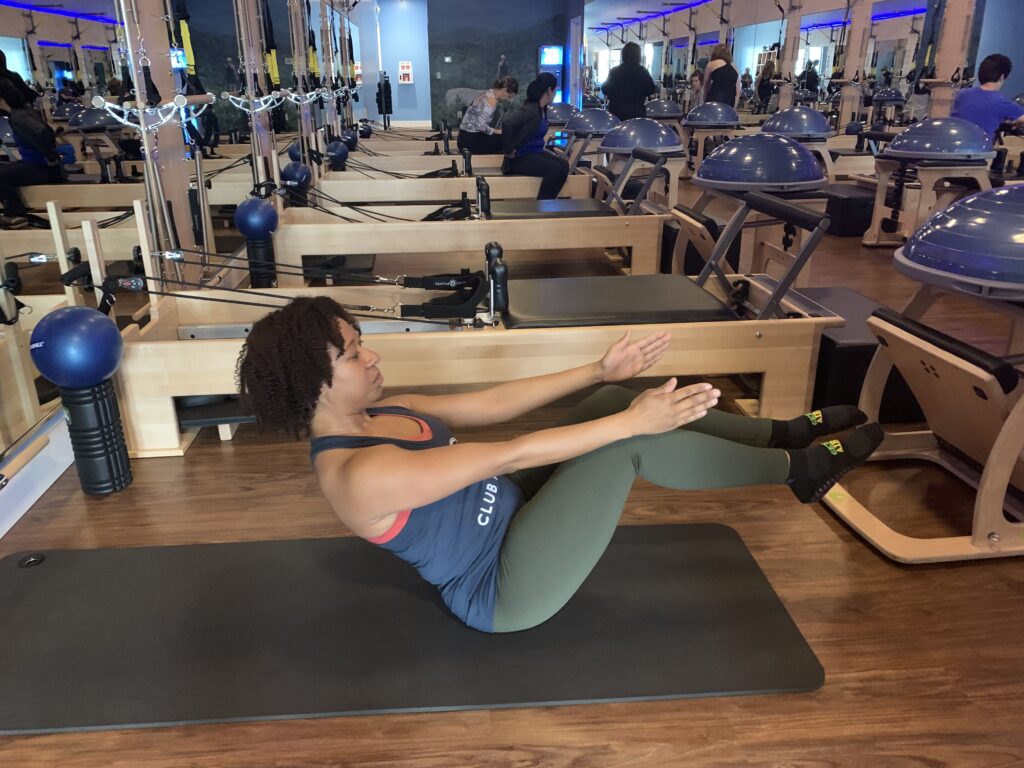May 20, 2021
Cross-Training Day
I love running, but I know it’s not good to run every day. Rest days are just as important to your fitness regimen as regular cardiovascular activity, as rest gives your muscles time to rebuild, repair and recover. Too much repetitive motion on your body can lead to injury.
This is why you should incorporate cross training into your fitness routine. While running is awesome, we runners can neglect strength training and other forms of movement that promote flexibility. Some of your rest days from running can be used for cross training, or you can incorporate it as an exercise mode on days it’s too hot, cold, wet or dark for a run.
There are so many fun and unique cross training options available to the public, many more than I had when I started running 25+ years ago. Here are my favorite low-impact cross-training activities you might also want to try, all of which include elements from multiple exercise formats.
Pilates: This overall body workout is great for increasing flexibility, improving posture and building strength. Developed by Joseph Pilates in the early 20th century as a rehabilitation method for dancers, Pilates has become a popular exercise platform for all. Many studios offer workouts on a Pilates reformer, a machine that offers resistance as you complete your exercises. You can also try mat Pilates, which involves completing the exercises on a yoga-style mat. (And mat Pilates can be done at home easily!)
Regardless of the format, Pilates is great for working some neglected muscles or muscles you might not have known you had. Strength training components are also included, which is great considering many of us can focus so much on cardio that we forget the importance of bone- and muscle-building work.
Pilates can feel deceptive — immediately after my first workout, I felt I had gotten a good stretch and worked my muscles, but it almost seemed too easy. Ha ha ha – the soreness I felt the next day let me know the real deal.
Barre: Who took ballet as a child? I sure did, although my dance career ended once I acknowledged I had two left feet. I always appreciated the beauty of the art form though, and when Barre workouts started to become popular, I couldn’t wait to try again.
You don’t have to know a thing about ballet to enjoy time at the Barre – yes, there are ballet-style moves involved, but you’ll also get a good mix of strength training and stretching during your workout. Some moves might feel familiar to Pilates and yoga veterans, and hand weights can be used for upper body training.
Be prepared to do a lot of repetitive small movements and holds, all of which will strengthen your core, legs and glutes. Don’t be surprised if you’re gripping the Barre for dear life, but before you know it, you too might get a dancer’s body!

TRX: You might see those black and yellow straps hanging high on the wall at your local gym or fitness studio, but not know what to do with them. They’re part of TRX Suspension Training, with TRX as an acronym for Total Body Resistance Exercise. You complete your workout – strength, resistance, stretching – by adjusting your body positions within the straps. Imagine doing planks, bicep curls and core training with just one piece of equipment!
TRX was founded in 2004 by a former Navy Seal, Randy Hetrick, who needed a way to stay fit while on assignment in cramped quarters and places where he wouldn’t have access to workout equipment. Most major gyms (and many smaller ones) usually have a TRX class on the schedule, or incorporate a TRX segment within a barre, Pilates or other workout class.

Yoga: While this discipline comes from an ancient spiritual practice, many of us enjoy yoga as a physical activity for its gentle movements, breathing exercises and relaxation modes. The yoga postures whose names we’re all familiar with – downward dog, anyone? – are great for stretching and flexibility, and we can improve our strength through regular practice.
Those who want a more strenuous workout can do some of the variations that have emerged, like “hot” yoga in a heated room and power yoga with faster flowing moves. (And many times, a combination of both!). Yoga is easy to do at home, making this an accessible exercise mode for all.
There are so many other exercise options available when you don’t want to run –swimming, cycling, spinning, rowing, weightlifting and stretching immediately come to mind – but finding the right one for you is all about your preference. Check out your local fitness studios and gyms to see what they have to offer!
What’s your favorite way to cross train?

By Shannon Shelton Miller /Twitter: ShannonSMWrites, Instagram: shannon.shelton1
Shannon Shelton Miller is a longtime writer and journalist who enjoys writing about sports, fitness, health, beauty, and parenting. She has been running for 27 years, starting from joining her high school cross country team. She has run a marathon, two half marathons, and countless 5K and 10K races.

